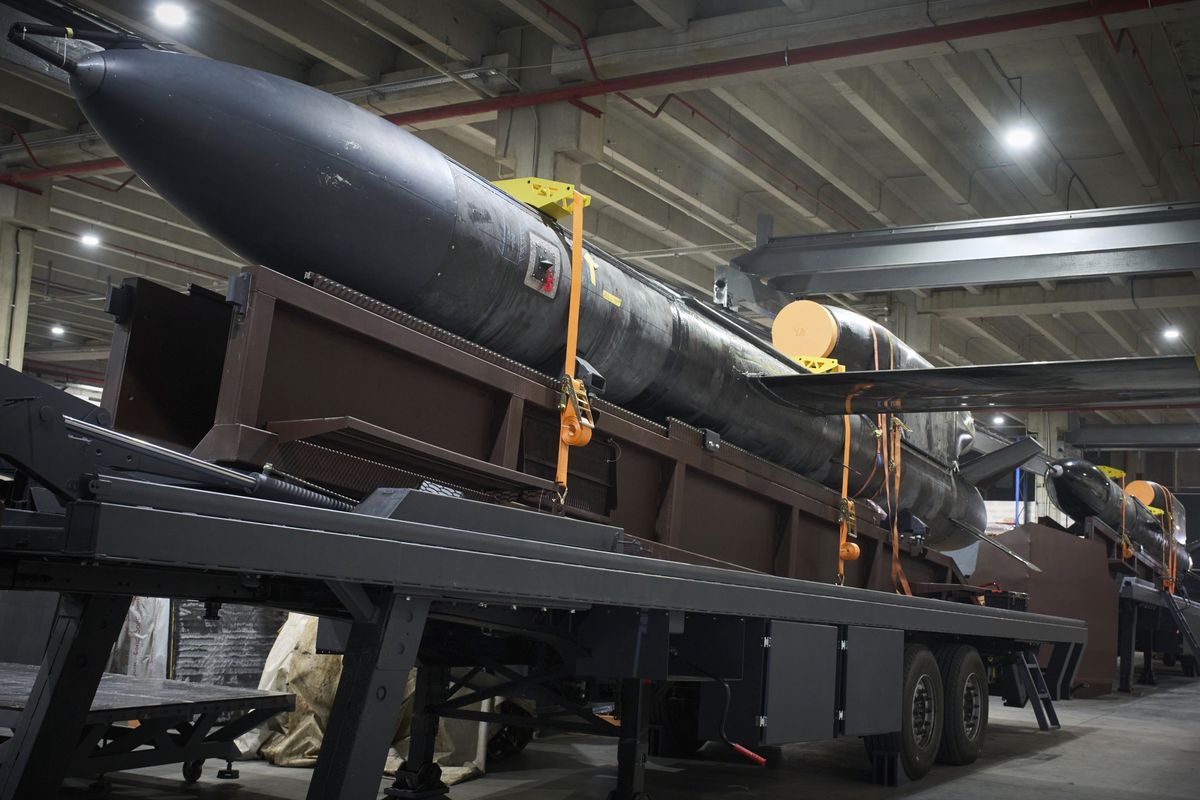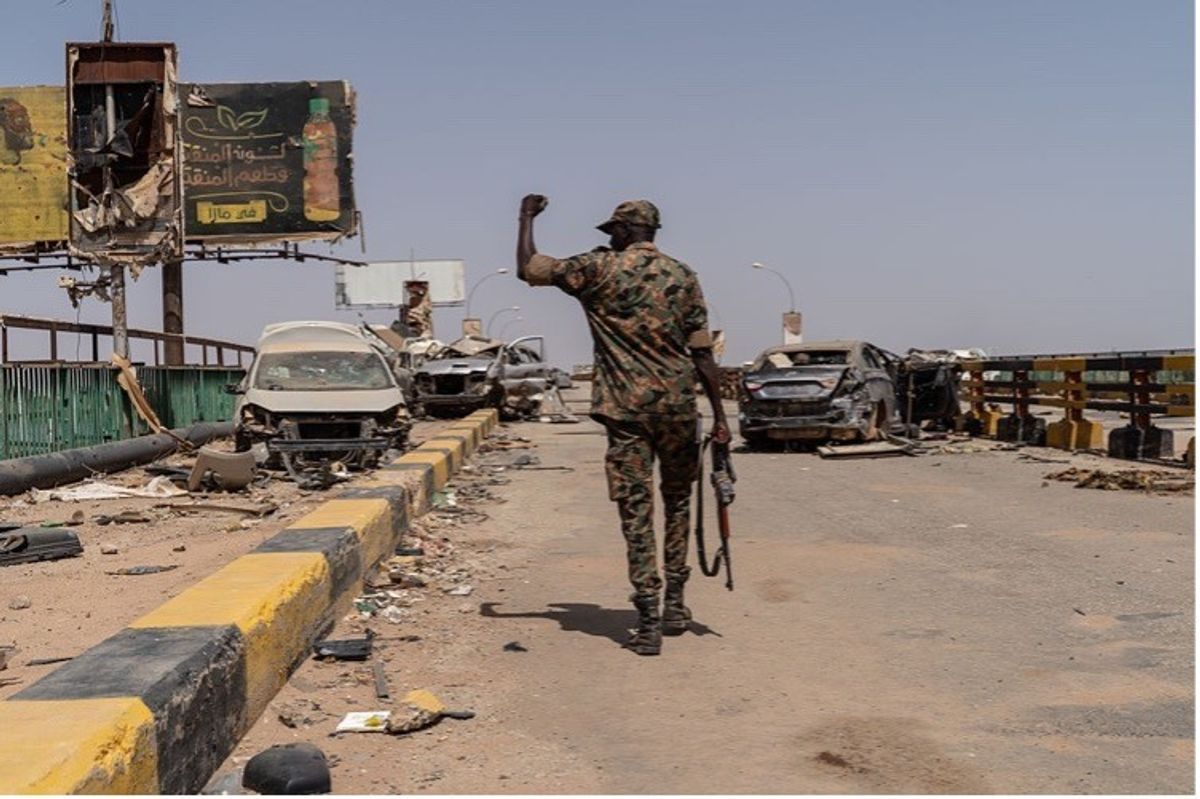BOTTOM LINE UP FRONT: A crucial decision by Germany to provide Leopard II main battle tanks to Ukraine and to allow other Leopard-equipped militaries to do the same means the powerful battlefield vehicles will have an impact in the areas where fighting is the most intense. As part of the deal, the Biden Administration also overcame early reluctance and announced the U.S. will deliver a number of Abrams tanks to Kyiv as well.
THE BIG QUESTION: Will the battle tanks arrive quickly enough to have an impact in the face of an expected Russian offensive, and can Ukraine use these weapons and other Western systems to spearhead their own battlefield initiatives?
BACKGROUND: The promised delivery of main battle tanks is the latest move to provide Western weapons systems to fortify Ukraine in its ongoing conflict with Russia. At the outset of the war, the introduction of drone technologies into multiple battlefield roles was at the center of attention. More recently, the U.S. decision to provide Patriot air defense technology signaled another step forward in Western support of Ukraine’s military strategy. Of course, this is not a one-way street, with Russia itself reportedly receiving unmanned aerial systems from Iran, and artillery munitions from North Korea.
Arguably, the availability of sophisticated and lethal U.S. and NATO weapons has been a decisive factor in Ukraine’s effective defense of its territory, and in its ability to stunt and reverse Russia’s occupation in some places.
THE CONTEXT
Ukraine has received from the U.S. alone, more than $20 billion in security assistance from the start of the conflict to the end of 2022. EU institutions and individual European states have contributed another $10-12 billion in the conflict’s first 10 months.
High-tech weapon transfers have received the most public attention, led by drones, HIMAARS rockets, and Patriot air defense systems. But non-lethal military contributions, such as Starlink satellite terminals and defensive cybersecurity technology, also have played a role in Ukraine’s ability to fend off Russia’s aggression.
A critical element of Ukraine's ability to repel expected Russian offensives involves the introduction of ever heavier armor into the conflict. The provision of main battle tanks and similar platforms is described as key to Ukraine’s ability to conduct combined arms and maneuver operations.
As the conflict approaches its first anniversary, projections of the “end game” in Ukraine have increased. Assessing possible outcomes includes the element that “war fatigue” might play as Western states are called on to continue substantial investments in Ukraine’s defense. Counter-arguments include the sizable long-term gains to be realized by the West if Ukraine prevails against Russia.
THE EXPERTS
Joshua C. Huminski, Director, Mike Rogers Center for Intelligence and Global Affairs, Center for the Study of the Presidency and Congress
Joshua C. Huminski co-chairs the Center’s Strategic Competition Program, which explores how conflict with Russia and China will unfold in military and foreign policy arenas, as well as in the information, technology, economic, and intelligence domains.
Dr. Cynthia Cook, Director, Defense-Industrial Initiatives Group and Senior Fellow, International Security Program, Center for Strategic and International Studies
From 1997 to 2021, Dr. Cook worked as a senior management scientist at RAND, where she worked on a wide range of studies for components across the U.S. Department of Defense, along with the Australian Department of Defense and the UK Ministry of Defense.
Kateryna Stepanenko, Russia Analyst, Russia and Ukraine Portfolio, Institute for the Study of War
A native of Kyiv, she has focused her academic and professional career on investigating the implications of Russian hybrid and disinformation warfare on Ukraine and conflict resolution in Eurasia.
EXPERT Q&A
The Cipher Brief: How do you assess the U.S. and German decisions to send main battle tanks to Ukraine?
Huminski: The United States’ provision of Abrams, the United Kingdom’s dispatching of Challenger 2 tanks to Ukraine, and Germany’s agreement to “free the Leopards” marks another increase in the West’s commitment to Kyiv. It is important to note that this is not the first time that NATO has provided tanks to Ukraine—former Warsaw Pact, now NATO members, have sent modernized Soviet-era tanks to Kyiv. It does, however, mark the first time that the West is providing its advanced main battle tanks. It is increasingly clear that the obstacles originally put forward—the complexity of maintenance and availability (of the Abrams) were merely stalking horses for the West’s political hesitance to send the tanks forward.
Ukraine has demonstrated a remarkable ability to manage multiple supply chains and logistics lines, as maintenance programs. The Abrams, Challengers, and Leopards (all of which will arrive along different timelines, with the Abrams likely taking longer according to reports) will necessitate an increase and expansion of this logistics tail, but there is little to suspect that Ukraine won’t be able to do so. The same applies for the operation of the tanks, which will take several weeks’ training to achieve basic proficiency.
The real challenge (and more important goal) is the development of a true combined arms capability on the part of the Ukrainians—the integration of infantry, armored vehicles, main battle tanks, with artillery and air support. In many ways, while the tanks are receiving the bulk of the attention, it is the other support—infantry fighting vehicles, precision guided munitions, etc…—that is of greater and more immediate utility to the Ukrainians.
The addition of the tanks comes ahead of the anticipated spring offensives by both the Russians and the Ukrainians. In the case of the former, Moscow’s forces are digging in and fortifying their positions—against which the tanks and combined arms of Ukraine will prove invaluable, but not a panacea. The Ukrainians will find offensive operations against these lines challenging as many of their previous advances, while laudable, were against thinly manned lines.
Russia has yet to deploy the bulk of the forces mobilized at the end of 2022, and looks to do so to fortify its defensive positions, relieve pressured other (including Wagner) forces, and stave off anticipated Ukrainian operations. The Russian forces are limited at this time and will likely be unable to support multiple offensives while fixing Ukrainian forces in place at other locations on the front.
The delta between the West’s continued delivery of tanks and advanced weapons, and Russia’s mobilization and rearmament is where the next phase of the conflict will be decided. It is a question of the mobilization of Russian personnel and limited rearmament versus the provision of Western weapons to an increasingly exhausted and strained Ukrainian forces. While it is almost certain that Russian cannot win the war based on Moscow’s most ambitious objectives at the opening of the conflict, the Kremlin is likely aiming to degrade Ukraine’s infrastructure and outlast Western political resolve.
In the longer-term, there is speculation that Ukraine is hoping that the formation of combined arms units centered on the main battle tanks will allow its forces to break through Russian lines and sever the land corridor to Crimea. The West will need to continue, and increase, its considerations as to what comes next and how it plans to manage this next phase of the war. While it may not be politically popular or palatable to suggest that the West has agency or a hand in how the war continues, it absolutely does and must remain actively engaged in its course. Kyiv has been notably successful in managing the West, and mobilizing popular support to drive military and political decisions.
Ukraine is, of course, incentivized to abide by the West’s strictures and has largely done so, but as the war progresses and should the offensives gain momentum, the relationship and dynamic could become more complicated, particularly if the risks of escalation rise.
The Cipher Brief: The U.S. reportedly will send the Patriot missile defense system and other weapons that will improve and extend Ukraine’s strike options and range. What is the battlefield impact of these technologies, and what risks are inherent in such transfers?
Huminski: At a top level, this latest batch of weapons transfers reflects an increasing comfort with the level of aid to Ukraine. As the aid has increased and not, as of yet, provoked a significant escalatory response from Moscow, the West expanded the type and capabilities of weapons transferred to Kyiv.
There is a risk that the West gets too comfortable and assumes that just because Russia has not responded or escalated that it cannot or will not. While most attention on escalation has focused on Moscow’s nuclear capabilities, there are other, non-nuclear ways in which Russia could escalate at sea, in space, and in the cyber domains, as well as via conventional means. For example, it could in theory, deploy conscripts to the occupied and annexed territories as now, under Russian law, these are Russian lands.
The Patriots and other more advanced systems won’t have an immediate impact as their deployment is some months off given the training required for the operation of these systems, and given their limited numbers. The introduction of more advanced systems frees up other Ukrainian assets to press the offensive. For example, Patriot batteries defending Kyiv and critical infrastructure would free up other more mobile air defense assets to support frontline offensive operations. Longer-range artillery will provide Ukraine with much deeper offensive reach into Russia’s rear areas (potentially within Russia itself) targeted supply depots and staging areas
Cook: Patriot missiles are defensive systems and will not provide strike options on their own. As part of an integrated air defense system, they could allow the Ukrainian Army more freedom to maneuver to conduct offensive operations, but due to somewhat limited mobility that is challenging. The greatest potential risk of the Patriot transfer is the Russian military gaining valuable intelligence about the system, whether that be radar data or technical data about the missiles themselves.
Stepanenko: Patriot systems increase Ukraine’s capacity to defend its critical infrastructure and deny the Russians the ability to fly combat aircraft in Ukraine. Strike weapons with extended effective ranges are important for increasing Ukraine’s offensive operations. Longer engagement ranges enable the Ukrainians to strike targets in the Russian rear and degrade Russian performance on the frontlines. It is not a coincidence that Ukraine regained large amounts of territory after receiving HIMARS over the summer.
It's not just for the President anymore.
Are you getting your daily national security briefing? Subscriber+Members have exclusive access to the open source report daily brief that keeps you up to date on global events impacting national security.
It pays to be a Subscriber+Member.
The Cipher Brief: Media reports have suggested Russia is preparing for an early 2023 offensive involving heavy weaponry and intensified troop mobilizations. How might Western allies help Ukraine counter such moves with additional weapons and support?
Huminski: Russia has not yet deployed the full complement of troops mobilized in 2022 and, if as Western and Ukrainian intelligence believes, Moscow will start to push these troops to the frontlines in the weeks ahead. These troops will likely be better (a marginal definition) trained and equipped than those rushed to the frontline. These will not, however, likely be shock troops capable of significant offensive or combined operations (of which Moscow has shown little effectiveness). They will certainly be able to hold the lines the Russians have dug and may be able to conduct limited offensives.
For the West, this means continued and increasing training of Ukrainian troops as the UK has recently announced, and the sustained and public commitment to provide Kyiv with aid and material. This is immeasurably valuable in a qualitative manner, but also in a morale-boosting way for Ukraine’s forces (and concomitantly, if more limited, detrimental to Russian forces). In the immediate term, delivering infantry fighting vehicles like the Bradley and Strykers, self-propelled howitzers, and other rapidly deployable and immediately available systems, as well as meeting infantry requirements will help strengthen Ukraine’s position ahead of the anticipated offensive.
Cook: Countering Russian offensives requires a comprehensive suite of capabilities. Advanced air defense systems will certainly help, and sending large armored vehicles to Ukraine looks increasingly likely. Given how successful munitions like the Javelin have been in defensive campaigns, they could also be likely candidates, but US inventory is dwindling to the point where there may limited additional systems left to provide while maintaining necessary US contingency reserves. The same story also applies to tubed artillery, as demand for this vital capability is outstripping supply. The U.S. will need to invest in manufacturing surge capacity to keep up its current pace of weapons transfers, but that takes time.
Stepanenko: This is an artillery war. Ukrainian forces need artillery systems, and they need the ability to strike targets that are far from the frontlines. Ukrainians also need the ability to deny Russians the ability to establish air superiority. Ukrainian forces need weapons that will not only help them to defend themselves, but also weapons that help them to conduct counteroffensives. Ukrainian forces asked for combat aircraft, tanks, and armored personnel carriers – all systems that will support Ukraine efforts to conduct maneuver warfare.
The Cipher Brief: What is the logistics and training “tail” of sophisticated military tech transfers?
Huminski: There is some irony in the fact that prior to the war in Ukraine, the long pole in the tent was not seen as military armaments, but political will. Today, it seems that the shortage (save for Germany’s obstinacy) is not in political will, but in armaments inventory.
The logistics and training tail of these advanced systems is significant, but so too are the tails for basic artillery shells. Right now, Ukraine’s forces, but also Russian forces, are burning through artillery shells and other munitions at a rate that exceeds production. In the case of the latter, that is why Moscow is turning to Iran, but also if reports are correct, North Korea. Moscow used higher rates of fire to offset numerical personnel disadvantages, but now finds itself in a position where its stocks are lower, but personnel numbers may be increasing.
For Ukraine, the more advanced systems are some months off from deployment and will require greater and more complex maintenance and supply chains than other platforms. The argument in favor of providing Leopard tanks in lieu of the M1 Abrams is the complexity of maintaining and operating the latter, and the availability and comparable ease of the former. Indeed, Kyiv is fielding a “franken-force” of sorts with multiple overlapping supply and maintenance chains. That Kyiv has managed to perform as well as it has with the diversity of both Warsaw Pact-era and NATO-standard systems is impressive.
Cook: Pentagon officials and war planners are certainly taking into account minimum stockpile requirements across the globe for a whole host of operational contingencies to ensure that the U.S. military remains a capable force and a credible deterrent.
The logistics tail for some of these complex technology transfers can be significant. Depending on how the aid package is structured some of the more technically complex sustainment and maintenance tasks, like high level interceptor maintenance, can take place outside of Ukraine. On the Patriot system the interceptor missiles come in canisters that are swapped onto launch vehicles on the battlefield, but they are bulky which will drive requirements for larger transport vehicles.
The Cipher Brief: Non-government technology suppliers, such as the Starlink Internet network and various drone manufacturers, are having an impact on the battlefield. How important are private sector transfers as a complement to what Western states provide?
Huminski: The war in Ukraine is proving to be a truly whole-of country conflict for Kyiv. From crowd-sourcing drones to organizing hacking campaigns and to the well-executed information war, Ukraine has mobilized not just its own citizens, but a global cadre of sympathetic actors. This is seen, perhaps most visibly in the well-curated stories from Ukraine about its soldiers jury-rigging commercial off-the-shelf drones to attack and harass Russian troops.
The extent of this crowd-funding ad crowd-sourcing of modern warfare is largely novel. There are few comparable examples of the size and scope of this effort. This open source architecture of military support is lending itself to rapid innovation, something the Ukrainians have demonstrated quite effectively via social media.
Starlink is a much different level of support and is indicative of the complexity of the modern battlefield. Is SpaceX now a party to the conflict? What happens if Russia kinetically targets one of the Starlink satellites to send a signal, launches a cyber-attack the network itself? This is not a challenge limited to Ukraine, but represents the broader question of commercial actors being party to a modern war.
Cook: Private sector transfers have provided Ukraine useful capabilities but assessing the specific operational impact of any given enabler is challenging.
Cipher Brief Senior Editor Ken Hughes contributed to this report
Read more expert-driven national security insights, perspective and analysis in The Cipher Brief















